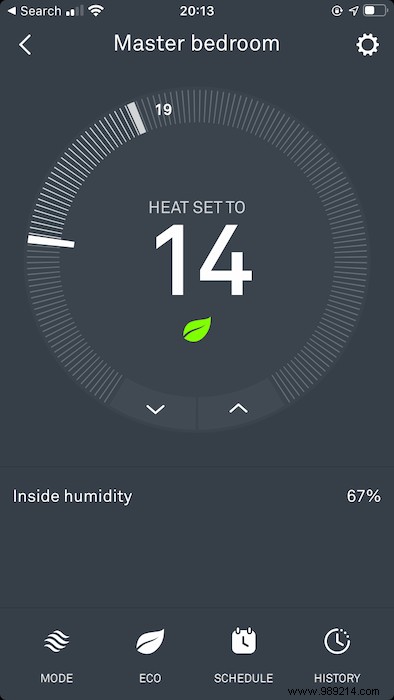Smart technology can make everyday tasks easier, safer and sometimes even more environmentally friendly! If you have a Nest thermostat, this article tells you how to reduce your energy bill and your impact on the environment.
By the end, you'll have mastered Nest's eco temperature mode and designed a heating schedule that will give you maximum savings while reducing environmental costs.
Nest is an impatient student! As soon as you set up your thermostat, it begins to learn your routines. Nest is constantly learning and will constantly refine its heating schedule to ensure your home stays at a comfortable temperature at minimal cost.
To get started, identify times when your home could be cooler without affecting your comfort level. Obvious examples include the times you usually sleep or when away from home. When identifying these times, you may need to consider the other inhabitants of your home. If you share your home with pets or even plants, low temperatures can negatively impact their health and happiness.
Depending on your location, it may even be dangerous to leave your property unheated for a significant period of time. For example, the water in your pipes can freeze, which can cause burst pipes and water damage. It's best to make your adjustments slowly and watch the results.
To teach Nest to lower the temperature for specific times, spend a few days manually changing the thermostat to reflect your desired changes. This may involve turning down the thermostat before going to bed or going to work in the morning. Repeat this behavior several times. Nest will take note and adjust its programming accordingly.
This process may take some trial and error, as you find a reasonable trade-off between energy savings and comfort. You may succeed in reducing your energy bill, but you decide that waking up in a freezing house is too high a price to pay!
When you find that balance between convenience and savings, it helps to know exactly how much you're saving.
Nest will email you a summary of your energy usage each month. However, you can analyze your energy consumption right now using Nest's Nest report.
To view your Home Report, launch the Nest app on your smartphone or tablet. You can then select the thermostat you want to analyze.

This screen displays a ten-day summary of the energy consumption of the selected thermostat.

You can view more information about power consumption for a particular day by tapping on that day.
The orange bar indicates the time the heating system was heating, and the number indicates how long the system was on during the selected day. The numbers that appear along the bar are the target temperatures set in your program.
For a few days, you can receive the coveted Nest Leaf icon. This sheet indicates that you have successfully reduced your energy consumption that day.
On the right side of the screen, you'll see icons representing the main reasons why your power usage went up or down that day. Some of these icons can be confusing, but if in doubt, tap the icon and Nest will display a tooltip with more information about the selected icon.

This report can be particularly useful for comparing and contrasting your energy usage for different days, including identifying factors that significantly increase or decrease your overall energy bill.
Nest's Nest Report can also be useful when testing different target times and temperatures, as you can clearly see the impact of each change. By using this report, you can continually fine-tune your energy consumption until you are as cost effective and environmentally friendly as possible.
Your Nest thermostat can detect if you're home using its activity sensors, your phone's location, and sensor data from any other available Google Nest products.
When your Nest determines that no one is home, it automatically turns on Eco Temperatures mode. This mode is designed to help lower your energy bill by maintaining lower temperatures when Nest is home alone. When you return, your Nest will resume its normal schedule.
You can also manually activate eco temperatures at any time. If you don't mind being a little cooler than usual, manually activating eco temperatures can help reduce your energy consumption.
To manually enable Eco Temperatures mode:
1. Launch the Nest app on your smartphone or tablet.
2. Select the thermostat for which you want to use Eco Temperatures mode.
3. At the bottom of the screen, tap “Eco”.
This thermostat will now go into Eco Temperatures mode.
If you haven't done so already, you should check your eco temperature range, as changing these settings can provide you with greater savings:
1. Launch the Nest app on your smartphone.
2. Select the thermostat you want to configure.
3. In the upper right corner, tap on the “Settings” icon.
4. Find the “Eco Temperatures” section and tap to expand.

5. You can now adjust your eco temperature range by dragging the slider. The Nest Leaf appears when you select a temperature that can help lower your energy bill.
Finding the most efficient eco temperature can take some trial and error. Lowering your eco temperature will save you money, but no one wants to come home to a freezing house!
While you're experimenting, it can be helpful to keep a close eye on your home report, as it lets you see the impact of your eco temperature adjustments.
To save more on your energy bill, you can use a laptop rather than a desktop computer, as it is more energy efficient.